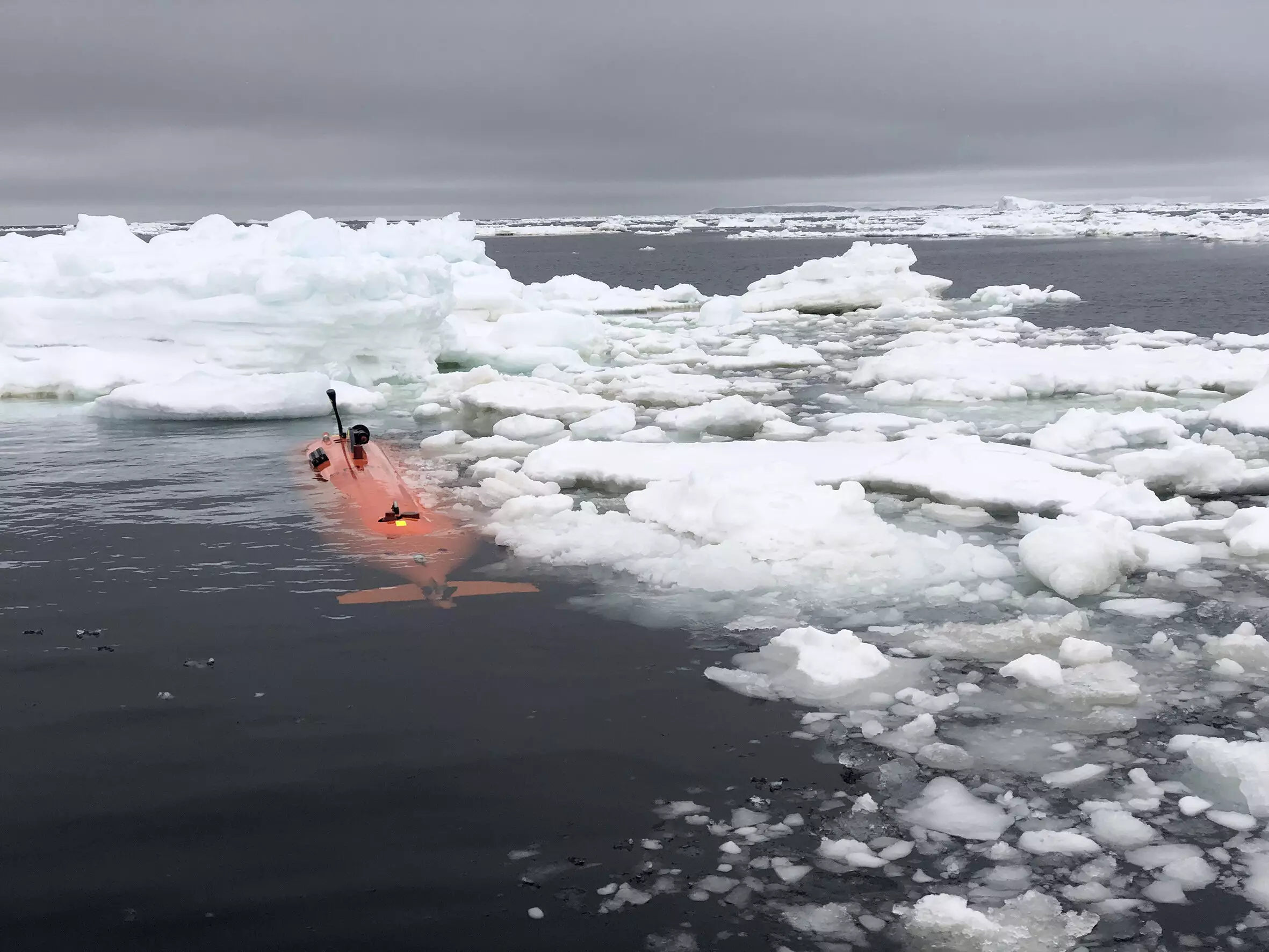The formidable expanse of the Dotson Ice Shelf in West Antarctica is not just a stunning natural wonder; it is a crucial player in the broader narrative of climate change and sea-level rise. An interdisciplinary research team, featuring scientists from the University of East Anglia (UEA) and other prestigious institutions, has unleashed a powerful new tool in the form of an unmanned submersible named “Ran.” This advanced underwater vehicle is not merely a marvel of engineering; it represents a significant leap in our ability to explore and understand the icy depths that lie beneath major ice shelves.
Over the course of 27 days, Ran embarked on its mission to penetrate the ice shelf, traveling a staggering 1,000 kilometers and diving deep into a 350-meter thick mantle of ice. It was meticulously designed to create detailed sonar maps of the ice’s underside, revealing insights that satellite imagery and traditional ice-core techniques could not provide. The stakes are monumental; as one of the most crucial ice shelves in the region, Dotson could have far-reaching implications for future sea levels, especially in conjunction with the Thwaites Glacier located nearby.
New Discoveries Challenge Established Ideas
The findings reported by the team have already shaken the foundations of current understanding regarding the melting patterns of the Dotson Ice Shelf. While the researchers confirmed existing theories like the accelerated melting caused by strong underwater currents eroding the base of the glacier, they encountered phenomena that raised new questions and hypotheses. For the first time, they mapped a complex underworld consisting of peaks, valleys, and formations that resemble ancient sand dunes.
Lead author Anna Wåhlin expressed genuine excitement, comparing the experience to looking at the “back of the moon” for the first time. Such a poetic analogy aptly captures the transformative nature of their findings. The sudden realization that the ice shelf’s landscape is not uniform contradicts previous assumptions and indicates a much richer tapestry of geological and hydrodynamic processes at play.
Moreover, the team identified vertical fractures and unusual melt patterns, which suggested intricate interactions between waterways beneath the ice and the forces generated by Earth’s rotation. This complexity resonates with the notion that our understanding of glaciology is still in its infancy, and that we have barely scratched the surface of what lies beneath these massive ice formations.
Interdisciplinary Collaboration: A New Frontier
One of the most compelling aspects of the Dotson Ice Shelf project is the collaborative spirit that guided the research effort. Oceanographers and glaciologists came together to share insights and theories, engaging in what can only be described as scientific detective work. This interdisciplinary approach is vital, particularly when attempting to unravel the complicated relationship between ice shelves and sea-level changes.
Prof. Karen Heywood, a co-author and leader of the UK side of the TARSAN project, highlighted the awe mixed with bewilderment that characterized the team’s initial response to the sonar images. The stark artistry displayed in these natural formations prompted a surge of questions among the scientific community, pushing researchers to think creatively about the processes that could generate such features.
The shared enthusiasm reflects a growing recognition that the interplay of oceanic and atmospheric processes is intricately linked to the behavior of ice shelves. Such cooperative investigations are essential for building more accurate predictive models regarding how these ice giants will respond amidst the warming planet, and how quickly they might contribute to rising sea levels.
Looking Forward: The Need for Continuous Exploration
Despite the challenges faced during this research mission, including the temporary disappearance of Ran while attempting follow-up surveys, the future of Antarctic exploration appears promising. The wealth of new data gathered is a treasure trove that will require extensive analysis and interpretation over the coming years.
This ongoing research is vital for refining current models, many of which are failing to account for the newfound complexities revealed by Ran’s sonar mapping. Using this advanced methodology, scientists are now poised to address enduring questions about the dynamics of ice shelf melting and its broader implications for global sea levels.
As researchers prepare to return to the Dotson Ice Shelf, anticipation looms on the horizon. Their goal is to document shifts and changes that may have occurred since their last survey. This undertaking, relying on innovative technology and interdisciplinary collaboration, is a testament to human resilience and intellectual curiosity in the face of an unprecedented global challenge. The mysteries that lie beneath the ice are only beginning to unfold, and it is an exhilarating time for glaciology and climate science alike.


Leave a Reply